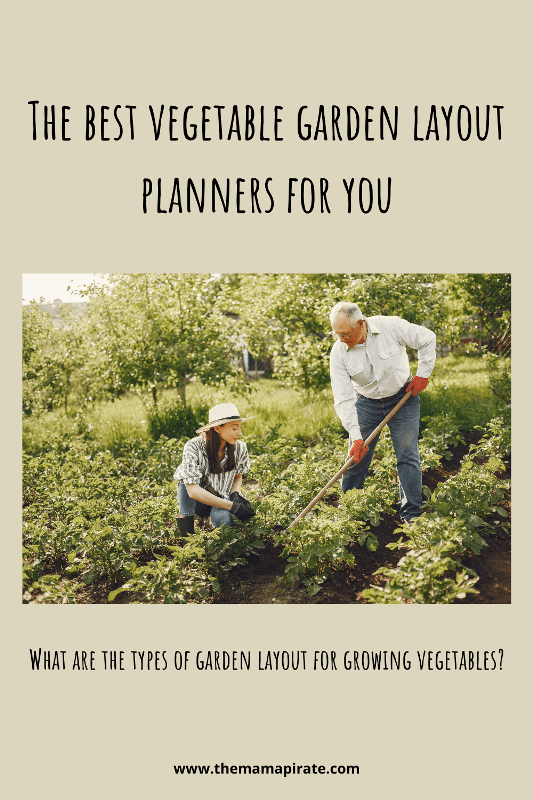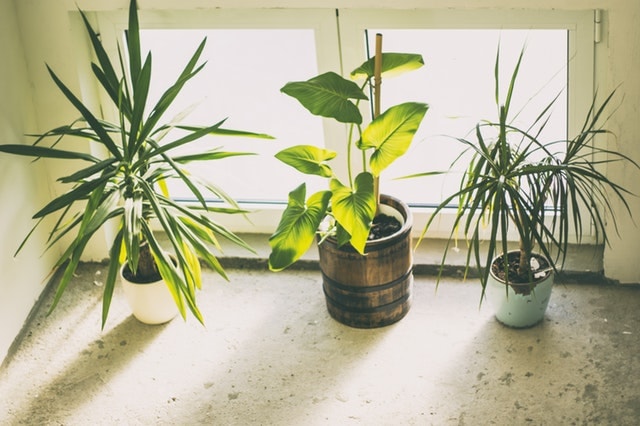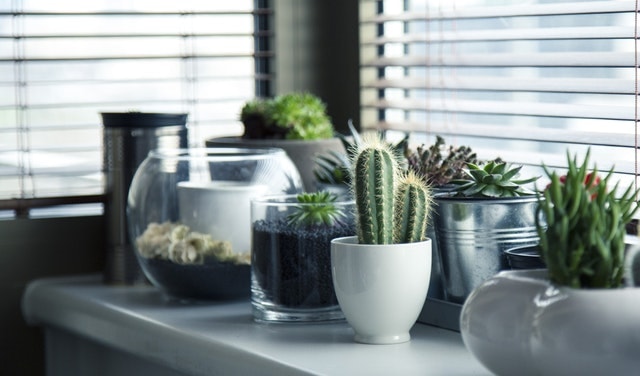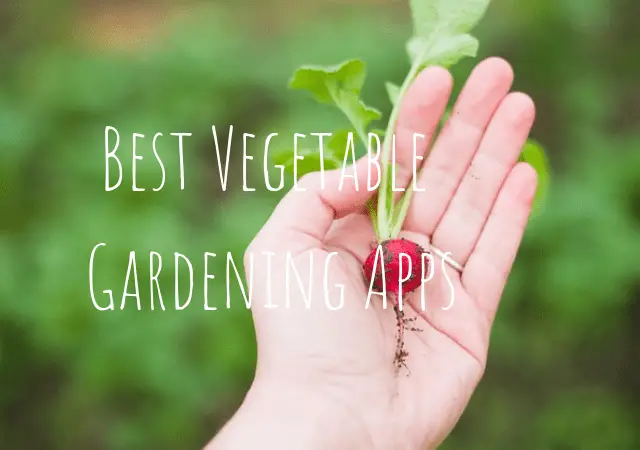Last Updated on 2 years by Namrata
The more we plant, the more we get to eat and breathe. It is always better to plan out something before executing it. And here we are with two primary points, with a garden layout plan!
When you have a big or small field for crops, you should plan out what to grow and how to grow it. There are two possibilities to maintain your farm. The first one is that you can grow one type of vegetable in large quantities, and the most convincing second point is that you can divide your green space into divisions. You can grow different kinds of vegetables, but all in lesser quantities if you happen to have a small farm. According to my senses, it is best to adopt the second choice. More variation of vegetables, but the quantity will be lesser according to what you would get while farming one of the crops.
As I said, everything needs a perfect plan and so divide your field. And for this, you need a vegetable garden layout planner for the best outcome, keeping aside the ways and procedures of cropping. The more you plant, the more the outcome of your hard work. Let us know more about the planner, shall we?
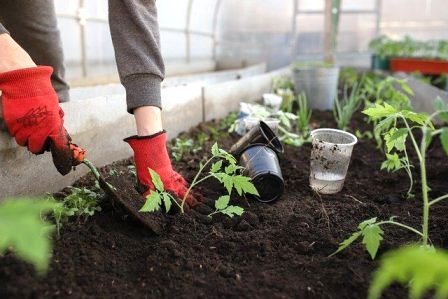
What is a vegetable garden layout planner?
If you are a beginner and want a vegetable garden of your own, then it’s a must for you to have a vegetable planner. It will solve your maximum problems regarding this matter. A vegetable garden layout planner helps you to organize your garden into separate sections. In each different section, you can plant different kinds of vegetables, which are essential for you or the ones you want to grow. It helps you to divide your space and make it useful. It will guide you throughout.
The planner consists of maps and the way it should be divided, how it should be divided, what plants you can grow, and so on. It has designs with long, straight rows placed in the north to south orientation. This particular direction ensures greater exposure to the sun and better air circulation. The east to west direction results in shaded crops from the crops, which will grow in the preceding rows.
MORE POSTS: Best Vegetable Gardening Apps of 2022
How do you plan a vegetable garden layout?
Let us see how to map the vegetable garden bed:
- Step 1: First and foremost, draw the area of your garden. You can simply do it on your computer or draw with your bare hands; anything will do. Sketch it and plot your garden beds on the drawing perfectly.
- Step 2: Choose the vegetables you want to grow. Make your seed or plant lists and then convert them on your map through drawings. Remember to make the exact garden bed you’re willing to build on your garden. Plot on the garden beds where you want which plant to grow and how.
- Step 3: Start with the high-value crops, always. The ones which you think are important should be on your priority list. Why is this so? It is because then you would have room for your important vegetables first and a bit more.
- Step 4: Your main concern should be the vertical crops that grow with the support of a trellis. As I mentioned before, your crops should grow in the north direction.
- Step 5: If there are vining crops on your list, then you need to give them more space. They need more space so that they don’t hamper or disturb the other plants.
- Step 6: Now, it’s time for the other crops to come into action. Select spring crops like Spinach and Lettuce. When these crops stop growing during winter, you can have other plants to grow as well.
MORE POSTS: How to make liquid fertilizer from kitchen waste?
What are the garden layout types for growing vegetables?
There are different types of garden layouts you would like to check out:
- Rows: This is the most common and basic type used by many. It is designed with long, straight rows running from north to south. This direction ensures that the plants will be exposed to maximum sunlight and air. At the same time, the east to west direction crops becomes shady. Crops like corn, beans, tomatoes, cabbage, carrots, lettuce, etc., grow well in this garden bed.
- Four Square: ‘Four square’ garden plan is another design that helps in the plantation. It’s like a square bed that contains four more small squares within it. You can plant different plants in each square. You can imagine drawing a square, and within that, you are crossing lines from top to bottom and sideways. That is exactly what your square beds will look like. Corn, pepper. Turnips, carrots, peas, etc., can be planted together.
- Square Foot: These are set up in 4×4 grids with string or wooden planks attached to them to divide them into different sections. There should be different plants in each section. Before planting the vegetables, you should place them at a certain distance to not overlap.
- Block: Another layout garden plan type is the block. This helps in more yields and results in much good quality vegetables. It prevents weeds and is the best way to plant crops in the rectangle bed, as it has much more space for the plants to grow bigger. Fertilizers are a must in this bed. Plants happen to overlap, and very little space is left. Fertilizers act as a catalyst for the betterment of the crop.
- Vertical: If you have less space in your garden, then this is the best layout for your garden. The plants grow vertically, engaging less space for their growth. If you plan to consider this layout, remember that you will require support for its vertical growth.
- Raised bed or Containers: Again, if you have less space, then this is another idea to plant your vegetables. Put the seeds in raised bed or containers and wait until it grows into a big boy. You can even change its place from here and there, as it is movable. The only thing is, big plants cannot be planted in containers.
Among these six types, the ‘Rows’ are the most popular layout in the market along with the ‘blocks.’
MORE POSTS: 21 Plant Care Apps to Keep Track of Your House Plants
Things you should be aware of before setting up a garden bed.
Everything requires knowledge, and so does gardening. Before setting your dream garden beds, you need to know a few things, which will help you execute your plan properly and perfectly. Let’s enlighten ourselves with this:
- Plant Spacing: Just like humans, the plant requires its own space. Do not over-crowd your garden bed with plants in the thought of getting more vegetables in return. It’s completely the wrong method to process. If plants are overcrowded, they will start fighting for nutrients, minerals, and sunlight. This will result in less production of vegetables, as the plants will not get enough necessary nutrients. It will turn into the survival of the fittest. So, it is better to place your plants at some genuine intervals.
- Crop Rotation: It is a must to rotate your crops in every season. If the same plants are placed in the same bed for years, they will get the same nutrients and be vulnerable to the same pests every time. Rotating helps in giving the plants different nutrients that are very effective for them. Fertilizers can be used, but natural nutrients are worth more than fertilizers. Always try to give your plants natural nutrients, so rotating your plants every season is a must. You can also categorize your plants into their family. Try to put plants, which belong to the same family, in one bed. This will help you to rotate the plants of the same family each year.
- Vertical Plants: If you have less space, then, as I have said earlier, it’s best to use the vertical method. It requires trellis and can grow in the minimum space available because the sky is the limit for them.
- Successful Planting: Plant your crops according to their season. In return, you’ll get more crops at the end of the year. Suppose you have planted spinach or lettuce during spring; by the time of summer, they will stop growing, and you can plant other crops which grow well in summer. Continue this method till winter; you’ll be in profit with more crops by the end of the year.
Winter Storage: Winter crops are the ones on which we are dependable the most. Make sure to produce much more winter crops than usual ones because, after winter, it takes time to grow some new crops in the spring or summer. Until then, you have to be dependent on your winter crops. Storage is the ultimate solution if you only consume the crops which only you grow in your garden.
Best vegetable garden layout planner apps to download
Everything is so easy in this world of the internet. If you are a beginner and need some help mapping your garden, you should be aware of some available applications in the Apple App Store or the Google Play Store. Virtual help is a good thing that will help you to go through the methods very easily. There are a few apps for your quick help:
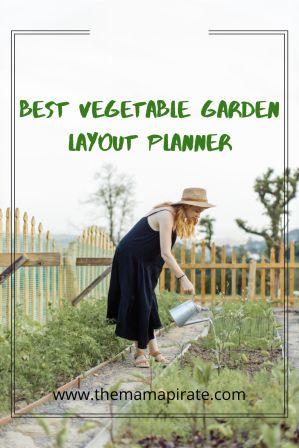
MORE POSTS: 10 Best Watering Tracker Apps
1. Armitage’s Great Garden Plants
Allan Armitage, Ph.D., professor emeritus of horticulture at the University of Georgia, has created this app to help you out in every possible way. You might have to pay a nominal charge to experience the premium virtual platform. This application helps you to know about the right plant to adopt. It also suggests where and how you can put up a plant in your garden or indoors. It brings you closer to the knowledge of gardening, which can be just gained at your fingertips. Pest prevention and storage of crops are available in this app in detail.
http://www.allanarmitage.net/dr-as-app-for-ios-androids (This is where you’ll get the above-mentioned app)
2. Kitchen Garden Planner at Gardener’s Supply
You will get advice and great knowledge about gardening on this application for free. You can print, share and save your design through this app without paying any amount, unlike the other apps. All information about your desired plant is provided in this app. How to take care of the plant, how to prevent pests, its origin, advantages, and disadvantages, etc., are given in this application. It even suggests which seed to buy for the plant. All over, it’s an incredible application you can try for gardening.
https://www.gardeners.com/how-to/kitchen-garden-planner/kgp_home.html (Link for the website)
3. Garden Manager
Garden Manager is the best app for beginners. If you are new in this field, don’t worry; this app has got your back. It will ask you a few questions and get to know about your needs and the type of garden you have. It will gather some information from you that will help in the further steps in the gardening procedure. It might ask for a subscription. The main fun is that it has different kinds of subscription plans, making it affordable and easier for you to use this app. It is very user-friendly and will make you a pro gardener within months. It also sends you reminders according to your plant’s needs. Isn’t that great?
https://www.gardenmanager.com/ (Get the app here)
4. Garden Planner
This application will help you in designing your garden with the help of a drag-and-drop interface. It provides you with a free trial to see what’s in there and ask for some payment. The price is reasonable, and this application believes in a one-time payment; therefore, you’ll get its updated version in the future every time without any cost. Just like the other apps, it helps you in mapping your garden. It will suggest some plans as well.
https://smallblueprinter.com/ (Get the app here)
Conclusion
Gardening is one of the best things you can do in your free time. If this is so, then why not farm organic vegetables for yourself and your family? Set your garden beds as described in this article and surprise yourself with the outcome. Good planning helps in the best farming. Hopefully, this will help you to achieve your goals in gardening!
MORE POSTS: 10 Best plant disease identification apps
